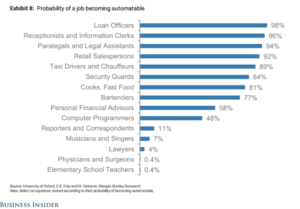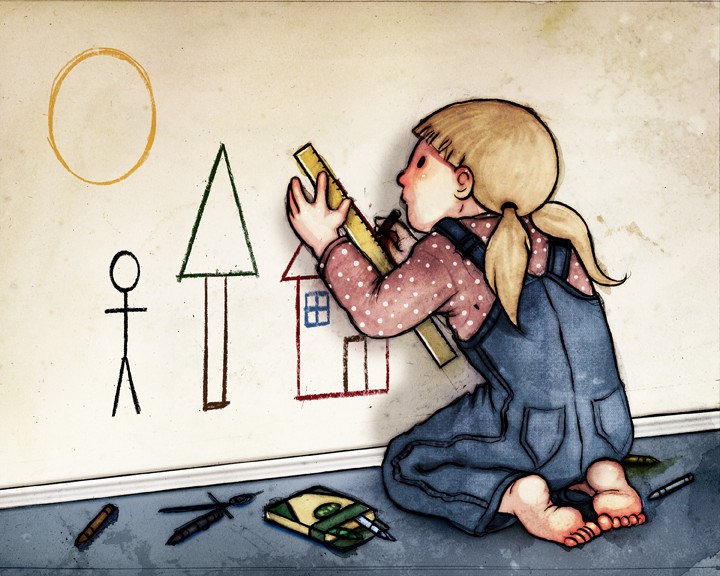Warm Up
—- **FOR NEW STUDENTS**————————————————
- What industry do you work in and what is your role?
- What are your responsibilities in your role/position?
- Can you describe to me the function of your workplace/company?
- How many departments, how many offices. National or International?
- What is the Minimum requirements for employment i.e Education or Experience?
- How many opportunities are there to ‘move up the ladder’?
- What is the process for changing job roles i.e Interview? Test?
——————————————————————————————
General discussion about your workweek:
- Current projects? Deadlines? Opportunities?
- Anything of interest happening?
——————————————————————————————-
Listening
- At what annual meeting did they dicuss the Fourth Industrial Revolution?
- What is another name for the third industrial revolution?
- Experts warn we are in a what type of economy?
SCRIPT
- It was in these Swiss mountains that the world was first introduced to the phrase the “Fourth Industrial Revolution,” and it’s been a hot topic among academics, politicians and business leaders ever since. But what exactly does it mean?
- The term “Fourth Industrial Revolution” was coined by the founder of the World Economic Forum, a former professor named Klaus Schwab.
- Schwab wrote a book with that title to describe an era marked by a technological revolution that is blurring the lines between the physical digital and biological spheres.
Let’s break that down.
- Technologies like artificial intelligence, autonomous vehicles or the Internet of Things are becoming ingrained in our day-to-day lives, and even our bodies. Think of voice-activated virtual assistants, face ID recognition or healthcare sensors.
- Schwab first presented his vision of the Fourth Industrial Revolution at the World Economic Forum’s annual meeting here in Davos in 2016, But to understand the idea, we need to go much further back in history to industrial revolution number one.
- The First Industrial Revolution started in Great Britain around 1760 and spread to Europe and North America through the early 1800s.
- It was powered by a major invention, the steam engine. The result? New manufacturing processes, the creation of factories and a booming textiles industry.
- From the late 1800s, the Second Industrial Revolution was marked by mass production and new industries like steel, oil and electricity. The light bulb, the telephone and internal combustion engine were a few of the major inventions of this era.
- The Third Industrial Revolution, sometimes known as the Digital Revolution, occurred in the second half of the twentieth century. In just a few decades we saw the invention of the semiconductor, the personal computer and the internet.
- So what separates the Fourth Industrial Revolution from the Third? Experts say the main difference is that technology is merging more and more with humans’ lives and that technological change is happening faster than ever. Consider this: It took 75 years for 100 million users to adopt the telephone. Instagram signed up 100 million users in just two years, while Pokemon Go caught that amount in one month.
- 3D printing is just one example of fast-paced technology in the Fourth Industrial Revolution. The industry has gone from a business idea to big business, with 3D printer shipments expected to increase from just under 200,000 in 2015 to 2.4 million in 2020.
- Today, you can have a hip replacement from a 3D-printed bone or use a 3D-printed bionic arm. Talk about blurring the line between humans and technology, right? This new era of technology is driving a lot of innovation. You can see in this chart the number of patents related to the Fourth Industrial Revolution, for things like 3D printing or AI, has been climbing up and up since early 2000.
- Organizations are embracing new technologies to make their businesses more efficient, similar to how they embraced the steam engine during the First Industrial Revolution, But some companies, and governments, are struggling to keep up with the fast pace of technological change. Research shows innovators, investors and shareholders benefit the most from innovation. The risk is that the Fourth Industrial Revolution is making inequality, which is already a big issue, even worse.
- One study found billionaires have driven almost 80 percent of the 40 main breakthrough innovations over the last 40 years. That’s a problem when the richest one percent of households
- already own nearly half of the world’s wealth.
- Experts warn we are in a “winner-takes-all” economy, where high-skilled workers are rewarded with high pay,
- and the rest of workers are left out. Studies confirm technologies like AI will eliminate some jobs and create demand for new skills that many workers don’t have.
- Privacy concerns are another issue as the Fourth Industrial Revolution turns every company into a tech company. Industries from food to retail to banking are going digital and they’re collecting a lot more data from their customers along the way. Users are starting to worry that companies know too much about their private digital lives.
- The World Economic Forum says a majority of leaders don’t have confidence their organizations are ready for the changes associated with the Fourth Industrial Revolution. With tech changing fast every day – it’s time to catch up.’
KEYWORDS AND PHRASES
- Blurr the lines = difficult to make a difference/distinction. become more similar, so that you are no longer sure that they are clearly different “The advert blurred the line between art and advertising”
- Sphere = an area of activity, interest, or expertise; a section of society or an aspect of life distinguished and unified by a particular characteristic. AREA / REALM / FIELD
- Break it down / Pull it apart = when discussing ideas or concepts we say these phrases to suggest looking at it more closely and try to understand.
- Internet of things = the interconnection via the Internet of computing devices embedded in everyday objects, enabling them to send and receive data.
- Examples; modern homes may have apps for the heating, locks, security systems. “ Kohler Verdera Smart Mirror”
- ingrained– (of a habit, belief, or attitude) firmly fixed or established; difficult to change. (religious beliefs …etc)
Discussion
1. How will/has the Fourth Industrial Revolution affect(ed) your workplace?
- Will AI or robots can help your job? Make it easier?
- Will you have more or less opportunities using AI or Robots in your workplace?
- How has technology changed the way of your job? Does it make more efficient?
- Can you think of any business opportunities for getting new customers using these technologies?
- What are some ways that we can prepare for such a radical shift in the workforce? Ensure computer literacy…?
Pros; scientific knowledge, human health, economic growth.
Cons; robots and computers can perform many human jobs

Sean’s extra points.
Google City (Toronto) AI City.
“One of the project’s goals is to base decisions about design, policy, and technology on information from an extensive network of sensors that gather data on everything from air quality to noise levels to people’s activities.
The plan calls for all vehicles to be autonomous and shared. Robots will roam underground doing menial chores like delivering the mail. Sidewalk Labs says it will open access to the software and systems it’s creating so other companies can build services on top of them, much as people build apps for mobile phones.
The company intends to closely monitor public infrastructure, and this has raised concerns about data governance and privacy. But Sidewalk Labs believes it can work with the community and the local government to alleviate those worries.”
On the 1% of the wealth
You look at creative production in any domain. It doesn’t matter. Artistic domain food production. novels were written novels sold, money generated, number of goals scored in soccer, number of compositions written anything like that where the Fundamental underlying measure is human productivity what you find is that a very tiny Percentage of people produce almost all the output.
It’s called the Pareto distribution. And it was studied in detail in Scientific productivity by someone named De Solla Price It’s a square root Law, so here’s the law fundamentally if you look at the number of people who are in a given domain who are producing in a given domain the square root of the people produce half the product. So that means if you have ten employees three of them do have to work
But if you have ten thousand employees a hundred of them do have to work.
which is why one percent of the people in the general population have the overwhelming amount of money and one-tenth of that one percent has almost all of that. So I think it’s like the richest Hundred people in the world have as much money as the bottom two and a half billion, and you think well that’s a terrible thing and perhaps it is but what you have to understand is that that law Governs the distribution of creative production across all creative domains. it’s something like a natural law.
ANSWERS
Winner takes all
Script with timestamps



